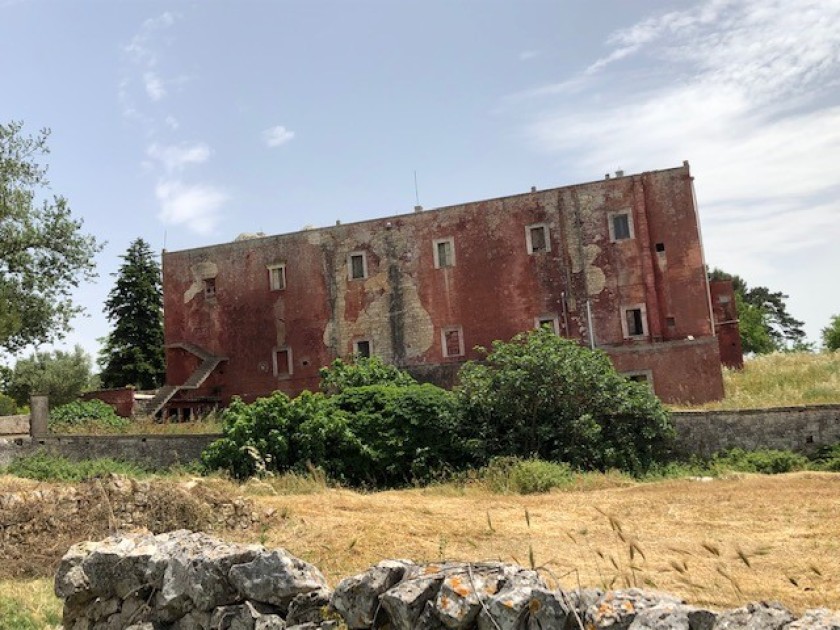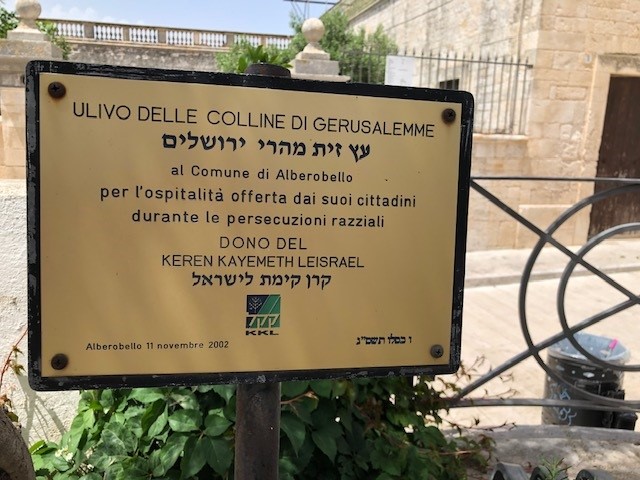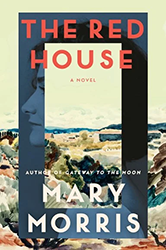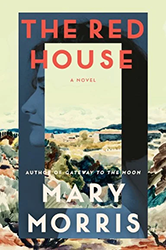
The Red House, Photo courtesy of the author
I didn’t want to go to Alberobello. It’s a touristy town in Puglia, Italy, known for its odd conical shaped houses and the hordes of visitors that flock there every year. My husband and I tend to avoid such places like the plague. But Cinzia, one of the daughters in the family where we were staying, insisted.
We had come to Puglia on a house exchange. Over the years we have done nearly twenty of these swaps, a tradition that began when our daughter was small and became our preferred way to travel. By 2016, I decided it was enough. But that spring we got an offer from the Marangi family in Puglia. They had a masseria (a fortified farmhouse) in an olive grove, surrounded by an orchard of orange and lemon trees. The masseria itself dated from the eighteenth century. I couldn’t say no, and so we went.
We immediately fell in love with Puglia — the region, the masseria, and the community, which included Marangi family members who lived nearby. Cinzia insisted on taking us sightseeing and so off we went. As I’d feared, Alberobello was packed with tourists and shops that sold trinkets and T‑shirts and, after a little while of trying to navigate the crowded streets, I saw a bench in a churchyard and told Cinzia and the others that I was going to take a rest.
It was pleasant, sitting alone in the shade, watching kids eat ice cream and dogs run around. I wasn’t sitting in that churchyard long when I noticed in front of me a rather stunted looking olive tree with a plaque around its trunk. Curious, I got up to see what was written on the plaque and, to my surprise, the words were in Italian and Hebrew. I speak Italian and can read a little Hebrew so I was able to read what was on the plague attached to that scrawny tree. The little plaque read: “This olive tree from the hills of Jerusalem to the people of Alberobello for the hospitality your citizens offered during the racist persecution.” The tree was planted in 2002.
I was stunned. What could this strange isolated town have to do with the persecution of the Jews? I am basically a secular Jew but I have a deep interest in Jewish history, especially the Holocaust. I am drawn to buried histories. I found I just could not walk away from whatever the story of this tree and this plaque might be. Questions were swirling in my mind. A little while later I met up with Cinzia and asked her what she thought. She had no idea. I went to the tourist information office in Alberobello and they also had no idea. At the time I didn’t pursue it any further. But I filed it away in my mind.

Photo courtesy of the author
In 2019 we were returning to Puglia to see the Marangis who had by now become our friends. An hour before heading to the airport, I ran into my neighbor as we were both walking our dogs. We exchanged pleasantries and then I mentioned that we were heading to Italy in an hour. And he began speaking to me in Italian and I, in turn, spoke to him in Italian. We were both a little surprised as we had known one another for almost thirty years. “I didn’t know you were Italian,” I told him.
Then he told me that he was a Roman Jew and his family had survived the Holocaust, then came to America. And I told him that I had lived in Rome many years ago. One thing led to another and I mentioned the tree in Alberobello. He knew nothing about the tree or any role that Alberobello had during the Nazi era, but he had recently taken a class in Italian Jewish history and he had some articles about the Jewish history of Puglia. Just before our plane took off, I downloaded the articles he passed along.
On the flight to Rome I was reading through them (mostly dry reading), but then I came to a brief mention, a footnote really, of a detention center in the outskirts of Alberobello called the Red House. I turned to my husband on the flight. “We have to go back to Alberobello,” I told him. He nodded. He already knew. Sometimes, as a writer, a story grabs you, and this one had already grabbed me back in 2016.
A few days after we arrived, we drove to Alberobello and I walked around, looking for the Red House. But I couldn’t find a trace of anything that might have been a detention center. Miraculously, someone in the tourist office recalled an old structure outside of town that was about to be turned into a discotheque. It sat on the property of what was now a hotel.
We drove five kilometers out of town and there I saw it. Sitting squat in a field, was this monolith of a dreary red building that had been an orphanage, an agricultural school, and, finally, a detention center. I walked around it. I peered inside. And I knew that I could not walk away from this house and its story,whatever that might be. When we got home, I phoned Cinzia. I told her about finding the Red House. “I have to go inside,” I told her.
Through a series of minor miracles, Cinzia found the man named Carlo who had the keys to the Red House and he met us there a few days later. Together we walked through an overgrown field to the large padlocked door which he opened for us. We entered a dark, cavernous room that had the remnants of the car the commander drove, various artifacts from the residents who stayed here, and a list of books for a lending library. We walked silently through the rooms of crumbling brick and plaster, wooden palettes, soup cauldrons. We saw an incredible chapel that one of the residents painted and the tree where a man hung himself.
A ghostly feeling haunted me as we moved among the rooms. Carlo explained that in the years before World War II, Nazis had come to Puglia to see the Red House. Its design had been used, in part, as a model for Auschwitz. He told us about the hunger and the cold that the residents suffered from and also of the kindness of the townspeople to the Jews who were trapped in the Red House, on the outskirts of Alberobello. Carlo revealed to me that the Red House was going to be turned into a discotheque until someone in the historic landmarks office realized the role it had served in WWII. The Red House was a detention center for Jews during the Nazi regime, but only nine of its inhabitants were ultimately deported because of the efforts of the community.
As I stood there inside this cold, crumbling building, I thought of all the circumstances that led to this moment: the house exchange I didn’t want to do, the town I didn’t want to visit, the small commemoration plaque on the scrawny tree, and the chance encounter with my neighbor. And it seemed to me that once I had walked into the Red House, I couldn’t walk out. Not until I wrote about it.

The Red House by Mary Morris
Mary Morris is the author of numerous works of fiction, including the novels Gateway to the Moon, The Jazz Palace, A Mother’s Love, and House Arrest, and of nonfiction, including the travel classic Nothing to Declare: Memoirs of a Woman Traveling Alone. Morris is a recipient of the Rome Prize in Literature and the 2016 Anisfield-Wolf Book Award for Fiction. She lives in Brooklyn, NY.



